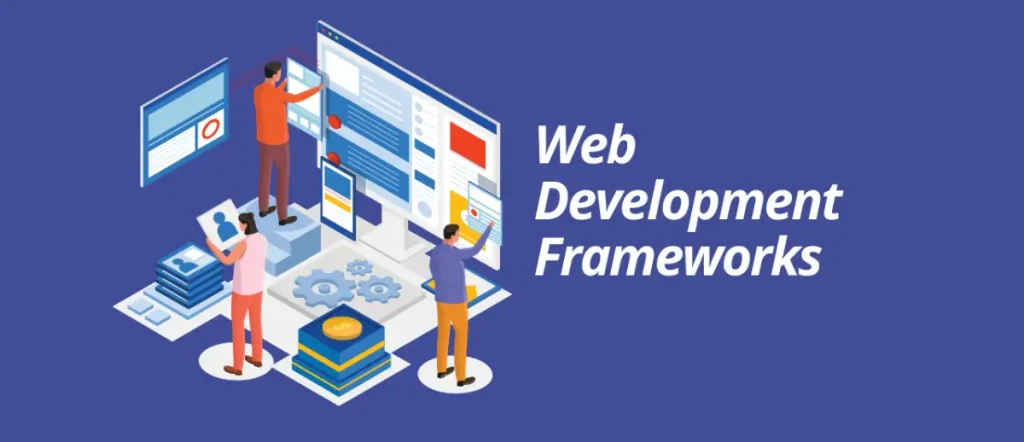
Introduction:
In today’s digital age, having an engaging and responsive website is essential for businesses and individuals alike. As web development continues to evolve, exploring modern web design frameworks have become indispensable tools for developers aiming to build efficient, scalable, and visually appealing websites.
These frameworks provide a structured foundation, enabling developers to create websites that not only look great but also perform well across various devices. In this article, we will explore some of the most popular modern web design frameworks and how they contribute to the ever-changing landscape of web development.
Understanding the Importance of Web Design Frameworks:
Web design frameworks offer pre-built templates and components that streamline the development process. They save time, reduce the risk of errors, and ensure that the final product is both functional and aesthetically pleasing. Frameworks also help maintain consistency across different web pages, ensuring a seamless user experience.
In addition to speeding up the development process, frameworks allow developers to focus on customizing the design and functionality of their websites rather than reinventing the wheel with every new project. This is especially important in today’s fast-paced digital world, where user experience and performance are critical factors in determining the success of a website.
Popular Web Design Frameworks in 2024:
1. Bootstrap:
Bootstrap remains one of the most widely used front-end frameworks. Developed by Twitter, this open-source framework offers a comprehensive set of CSS and JavaScript components that make it easy to create responsive, mobile-first websites.
With its grid system, pre-designed components like buttons, forms, and navigation bars, Bootstrap allows developers to quickly prototype and build websites that are consistent across different devices and screen sizes. Customization is another strong point of Bootstrap, as developers can easily modify the default styles to match their branding and design preferences.
Why Bootstrap is Still Relevant:
Responsive design: Bootstrap’s grid system ensures websites look great on all devices.
Customizable components: Easily tailor the design to fit your needs.
Extensive community support: With a large user base, finding solutions and resources is easy.
2. Foundation:
Foundation by ZURB is another powerful front-end framework that emphasizes mobile-first design and responsiveness. It offers a flexible grid system, pre-built components, and SCSS (Sass) support for advanced customization.
One of Foundation’s key strengths is its accessibility features, which ensure that websites are usable by people with disabilities. Additionally, Foundation’s Motion UI library allows developers to create smooth, customizable animations that enhance the user experience.
Why Choose Foundation:
Mobile-first approach: Ensures your website performs well on all devices.
Accessibility: Built with accessibility in mind, making it easier to create inclusive websites.
Motion UI: Add engaging animations to your design with ease.
3. Tailwind CSS:
Tailwind CSS is a utility-first CSS framework that has gained significant popularity in recent years. Unlike traditional frameworks like Bootstrap and Foundation, Tailwind CSS allows developers to apply styles directly to HTML elements using predefined classes.
This approach gives developers more control over the design and reduces the need to write custom CSS. Tailwind CSS is particularly well-suited for projects that require a high level of customization and flexibility.
Why Tailwind CSS is a Game-Changer:
Utility-first approach: Apply styles directly to elements without writing custom CSS.
Highly customizable: Tailor the framework to meet specific design needs.
Efficient workflow: Streamlines the development process by reducing the amount of custom CSS.
4. Materialize:
Materialize is a modern front-end framework based on Google’s Material Design principles. It offers a set of components and styles that follow the guidelines of Material Design, ensuring a consistent and visually appealing user interface.
Materialize includes features like a responsive grid system, parallax effects, and CSS animations that make it easy to create engaging and interactive websites. For developers who prefer the clean, minimalistic look of Material Design, Materialize is an excellent choice.
Why Materialize Stands Out:
Material Design principles: Ensure a consistent and modern user interface.
Interactive components: Easily add animations and effects to enhance user experience.
Responsive design: Create websites that look great on all devices.
5. Bulma:
Bulma is a modern CSS framework that is both simple and highly customizable. It is built on Flexbox, which makes it easy to create responsive layouts without the need for complex CSS. Bulma is known for its clean and readable syntax, making it a great choice for developers who want a straightforward and easy-to-use framework.
Bulma’s modular design allows developers to include only the components they need, which can help reduce the overall size of the CSS file and improve website performance. With a strong focus on minimalism and efficiency, Bulma is an excellent option for developers looking for a lightweight and flexible framework.
Why Bulma is Worth Considering:
Flexbox-based: Create responsive layouts with ease.
Modular design: Include only what you need for better performance.
Clean syntax: Write CSS in a simple and readable manner.
Choosing the Right Framework for Your Project:
Selecting the right web design framework depends on your project requirements, target audience, and personal preferences. If you prioritize customization and control over your design, frameworks like Tailwind CSS or Bulma may be the best fit. On the other hand, if you need a more structured and component-driven approach, Bootstrap or Foundation could be the ideal choice.
It’s also important to consider factors like performance, accessibility, and community support when choosing a framework. A well-supported framework with a large user base can provide valuable resources and help when you encounter challenges during development.
Conclusion:
As web development continues to evolve, modern web design frameworks will play a crucial role in shaping the future of the industry. These frameworks not only make the development process more efficient but also ensure that websites are responsive, accessible, and visually appealing.
Also Read: Color Theory in Web Design
